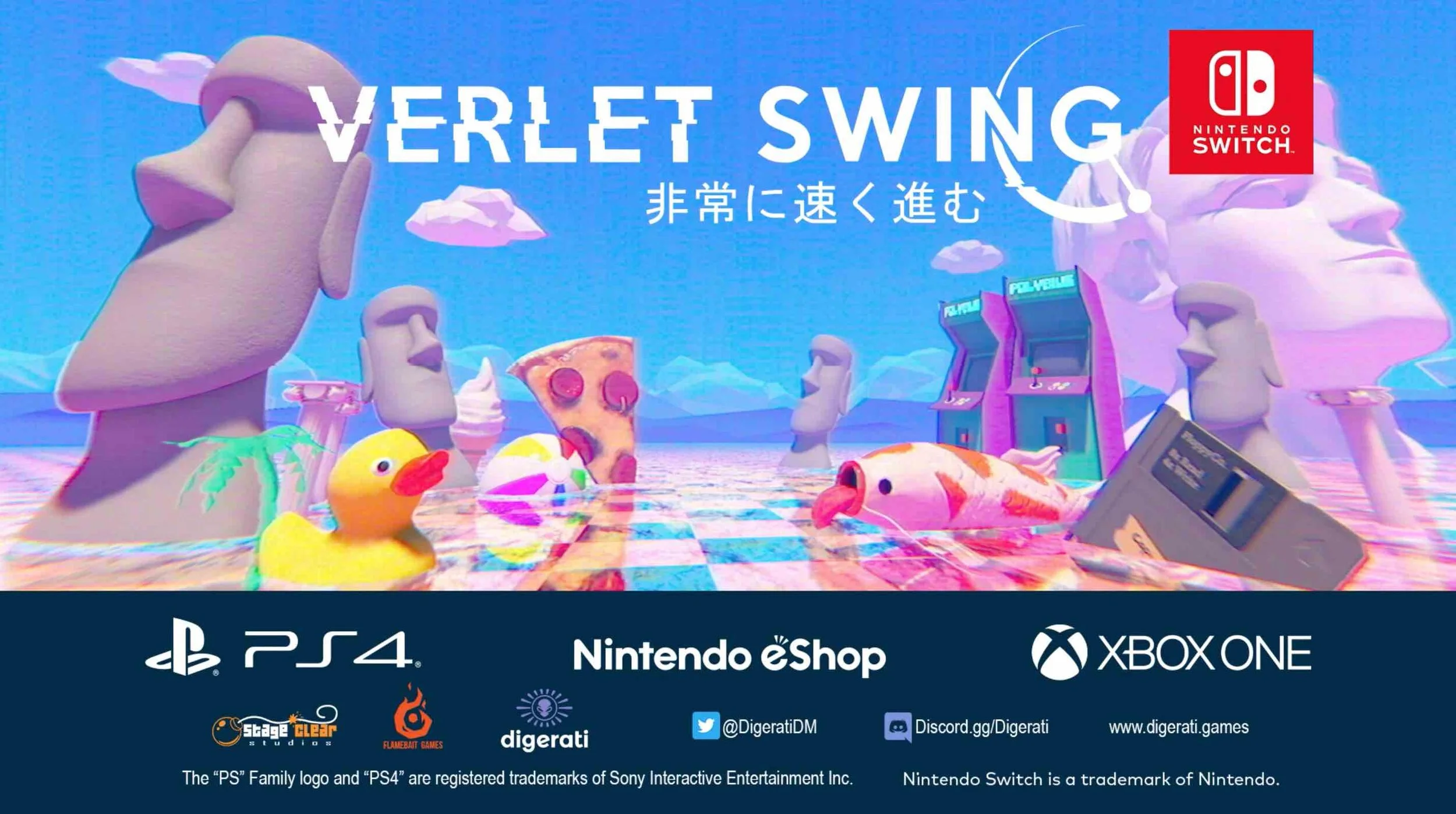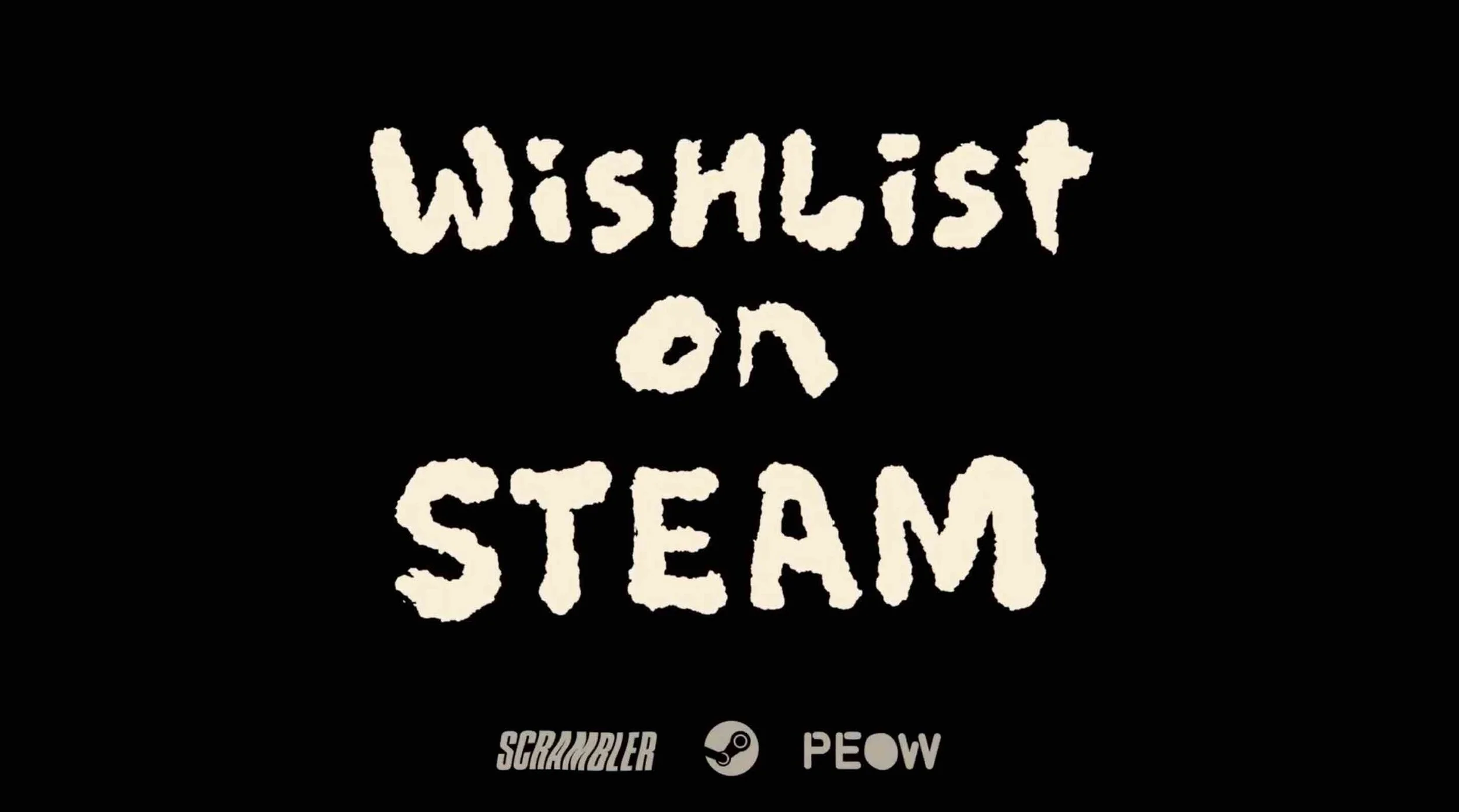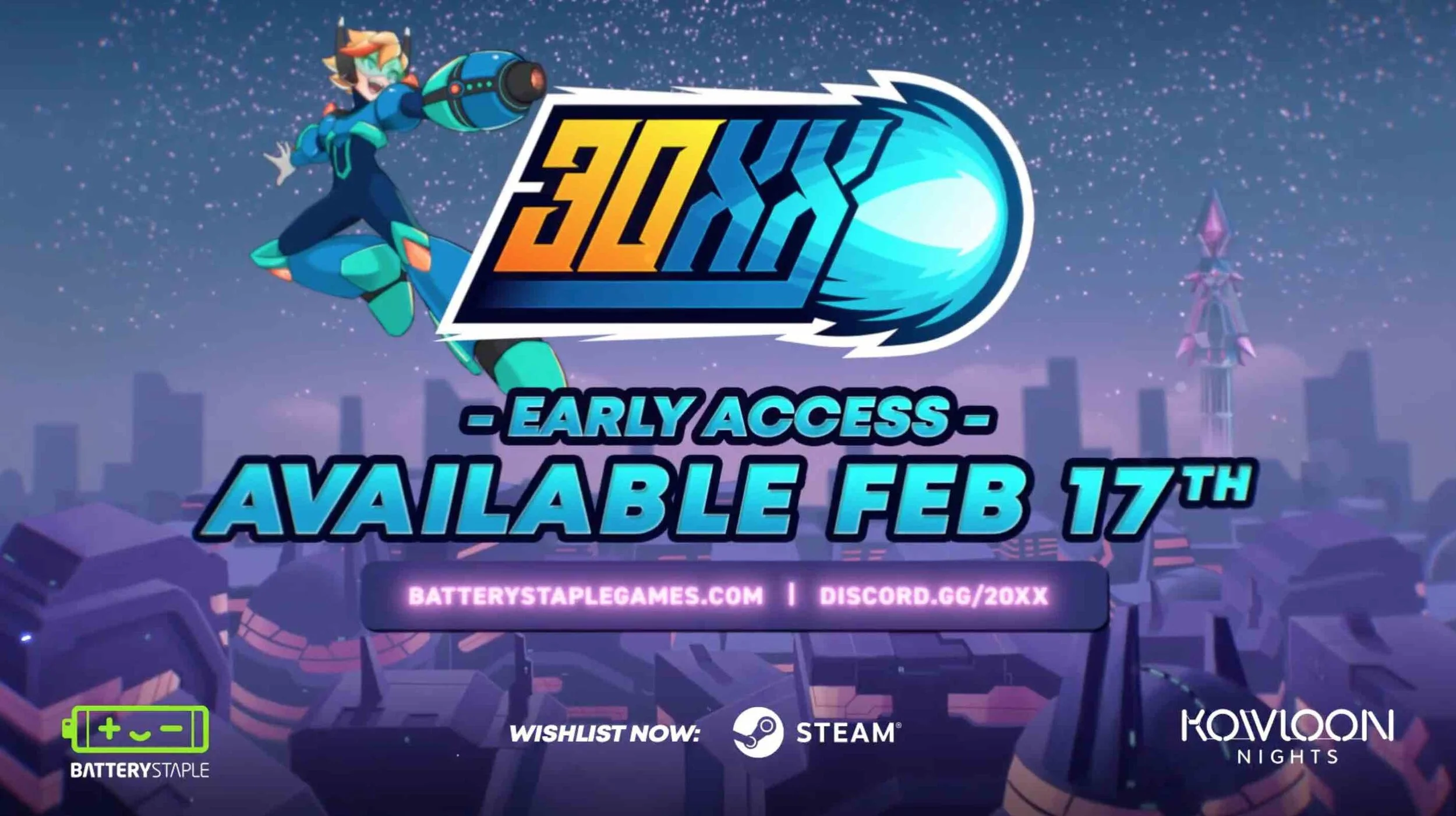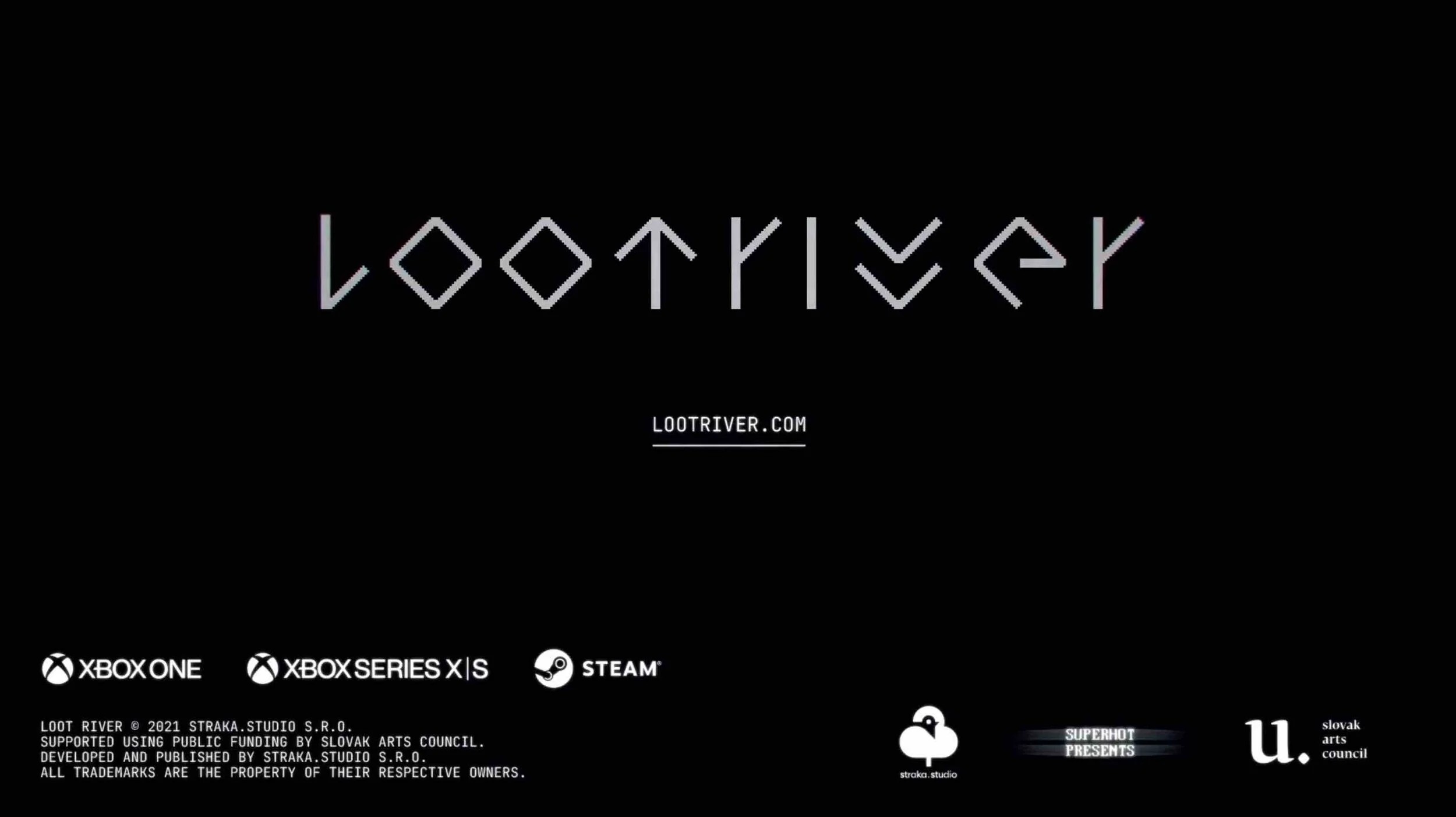The Game Trailer Call to Action
Your trailer should always have a call to action (or CTA). Asking/telling people to do something makes a difference. That's why in so many YouTube videos, people saying "like and subscribe!" Cliché as it is, it still does make enough of a difference that you might as well do it. For indie games, the recommended advice is to simply have an end slate which includes:
The game's title
WISHLIST ON STEAM
Logos for other platforms
Logos for developer, publisher, etc.
Legal lines, copyrights, etc.
The reason is for the focus on wishlists is Steam wishlists are the most effective way to convert people to buyers. If they've wish listed the game, they'll receive an email notification when it's available for purchase and even if they don't buy it on release, they'll get notified when the game goes on sale at a discount. Next best way to convert people is probably a notification from an email newsletter sent from the developer or publisher. Even if a social media post saying "The game is available now!" goes viral, the percentage of clicks will be comparatively very very very low. This is why people talk about wishlists so much in game marketing.
But shouldn't I put on the end slate my website, Discord, Twitter, Facebook, TikTok, Instagram, subreddit, and newsletter?
Don't overwhelm the audience with choices.
Keep it simple.
You might be thinking: "But if I tell them all the platforms they can follow me on, they'll pick their favorite one and follow me there." That's one possibility, another more likely possibility is they won't follow you at all. Or, by indicating you're on every social media platform they might assume you stretch yourself thin, and no one particular platform receives a lot of attention.
This trailer had TWO end slates, both of which are overwhelming. Keep it SIMPLE.
Here are the variety of things you can put on a trailer end slate, and some considerations to help you design it.
Who made/released the game
What platforms the game is on
When the game is available
Where to wishlist the game
How to follow for more updates
At the end of this breakdown I'm also going to talk a bit about why you might want some end slate elements to come at the beginning of the trailer.
Who made the game
If you don't show the logos of the game developers and publishers somewhere around the beginning of the trailer you'll definitely want to show it on the end slate. I generally tend to put them closest to the bottom because from the customer's point of view, it's usually the least important information; they need to know where they can get the game or how to sign up for updates if they wish. I try to keep developer and publisher logos small and grouped together either in a cluster or the bottom line of the end slate.
If your end slate is starting to look cluttered, I'd consider having these logos somewhere up front and not including them on the end slate, but overall I think it's good to include.
Fellow game trailer editor Marlon Wiebe calls this "Logo Soup" like Alphabet soup. Not the businest I've ever seen, but still feels like it could use some pruning.
What platforms the game is on
This is VERY IMPORTANT. I can't tell you how many game trailers I've watched which ended with the title and little else. People on YouTube don't click descriptions unless they're really really interested, and if the trailer is being posted somewhere without platform information how do you expect people to know where to go?
Don't needlessly give the audience extra work to find to your game's store page, and yes, googling the title of the game is extra work. If it means you have to export even more versions of your trailer based on where it's being uploaded, then so be it. At the very least, a version for each console and platform, and a version which includes them all for the platform agnostic places the trailer will be posted.
Indicating where the game is available via their logos is absolutely essential. The only caveat is if the CTA is something platform specific like "WISHLIST ON STEAM!"
This one for Samurai Gunn 2 gets straight to the point, though by putting it on a separate slate, it means the title gets separated from the CTA.
When the game is available
If you have a release date or window you should indicate this on the end slate. If you don't have an exact date, a month can be okay if you're fairly confident, but I know that there are a lot of games that probably regret even putting a month in trailers because months or years can slip by for myriad reasons.
If you have a month I recommend spelling it out like "April 25, 2021" rather than using a date format like 4/25/2021 because depending on the region, the formatting could be 25/4/2021. Either way, it might have to be localized.
Something else to consider for people in the Northern hemisphere is that seasons are flipped in the Southern hemisphere! I know that a huge part of the gaming industry is on the same seasonal schedule, but "Winter 2021" doesn't mean the same thing to people in the Southern hemisphere. If anything it says: "We didn't think about people in the Southern hemisphere" (I've certainly been guilty of this)
Some trailers say Q1, Q2, Q3, Q4, though those always struck me as so business-like and not something I'd expect customers to understand. An alternative could be "Early 2021" "Mid 2021" or "Late 2021."
I don't have a definitive answer about how to format the date in your trailer, but hopefully these considerations help you find the right answer for you!
This one is very nicely designed! I probably would've put "Wishlist on Steam" above the website and Discord.
Where to wishlist the game
Not all digital storefronts have wishlists like Steam does, and I'm not sure they're as fully featured as the wishlist system on Steam. I know the Epic Games store has a wishlist feature, Nintendo's eShop does (though I think those store pages can't go live until release is imminent). Since Steam is still the biggest platform for PC games, that's why it's much more typical to see "WISHLIST ON STEAM" as the trailer's CTA.
How to follow for more updates
Here's where I think there might be a lot of debates about the end slate. My friend Dana Trebella who does PR, Marketing and Strategy for games says the end slate shouldn't include a website URL, because in most cases sending people to the website means adding extra clicks between the trailer and the store page, and ultimately you want the potential customer on the store page.
The argument I could see for including the URL is if there's a signup to the game or developer's newsletter, because newsletters have a very high rate of conversion compared to social media conversions; it's not even close.
A website can be a nice when it's a well designed and aggregates all the pertinent information about the game, but they're probably more useful for press, media, and maybe potential investors or publishers. They're less useful for customers since they'll tend to have all the stuff a store page has anyway.
The other things I've seen on end slates are something like: Follow the game on Discord! Or any other number of social media sites like Twitter. I feel like those places are more for people who really want to be a part of the community, and I don't think that's the majority of people who express interest in a game.
This one is okay, but I think "Wishlist on Steam" should be the main call to action.
How to design the end slate
I'm not a graphic designer by trade, so take all of this with a grain of salt. But my general advice is to take the different elements on the end slate and order them from most important to least important. Then make the most important parts the biggest and/or most prominent, and make everything comparatively smaller depending on their position in the hierarchy. This is a roughly how I prioritize the parts of the end slate:
Game title
Call to action, release date
Platforms (Nintendo Switch, Steam, Xbox, etc.)
Developer, publisher and software logos
Legal lines, copyright info, etc.
Should the end slate be at the... beginning?
You may have heard that a large percentage of people who start watching a video don't get all the way to the end. If that's indeed true, then an argument can be made for putting some end slate elements at the beginning of the trailer or after the cold open. For example, the release trailer for Astroneer has a short bumper at the beginning which ends with: "Astroneer: Available Now" It doesn't include the platforms it's on, but the most important parts of the end slate are there, the title and the call to action.
As an editor, I'm hesitant to do this sort of thing because I worry it could make it feel like the trailer has ended scarcely before it's began, and it just feels like succumbing to the whims of the short-attention-span internet user. But the marketer in me says that if the most important information is missed, then it's not an entirely successful trailer. I haven't seen many games do this sort of thing, but you might want to consider it if you're worried people won't make it to the end of the trailer (and again, most people don't)
Hopefully that wasn't too overwhelming, because I didn’t even touch on all the specifications and legal lines required if you’re releasing a game on consoles. If you take any one thing away from this article is you should at the very least use the end slate to let people know where people can buy your game. It would be a shame to put so much work into the trailer only to lose out on more clicks just because people didn't know where to go, and didn't feel like figuring it out for themselves.
There are many many many ways to make end slates, so if you have your own techniques or success stories please send me a message; I'm very curious to know!





